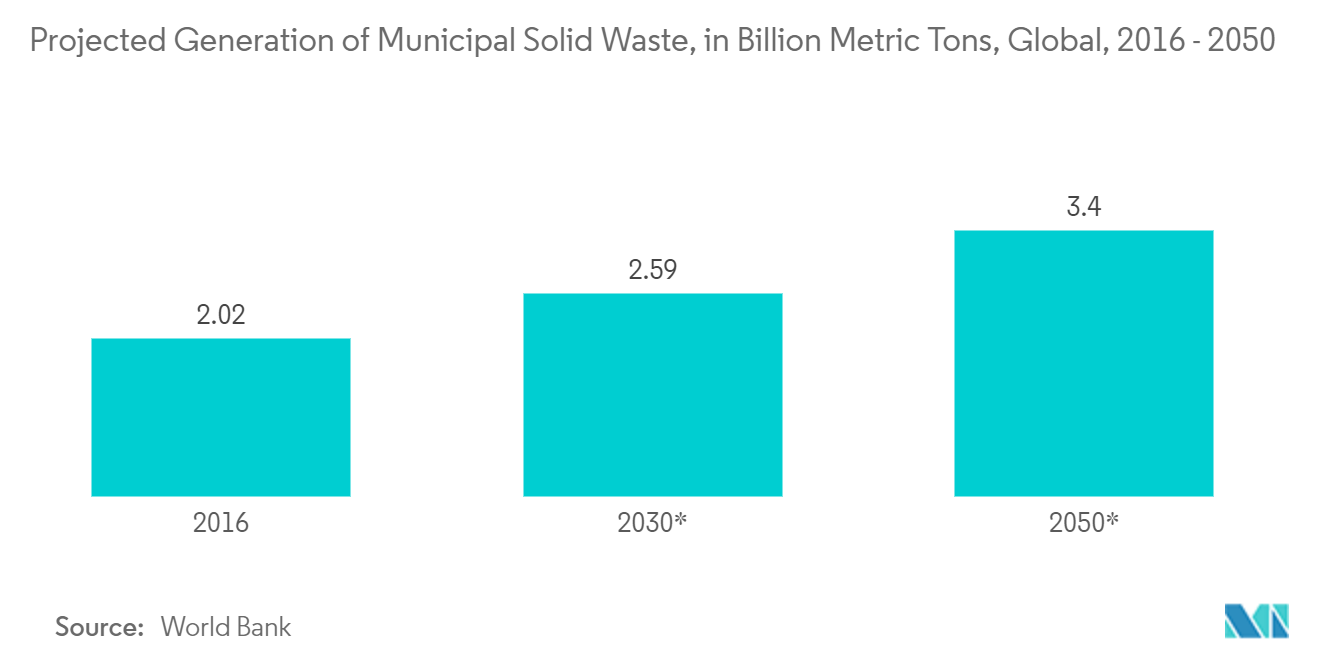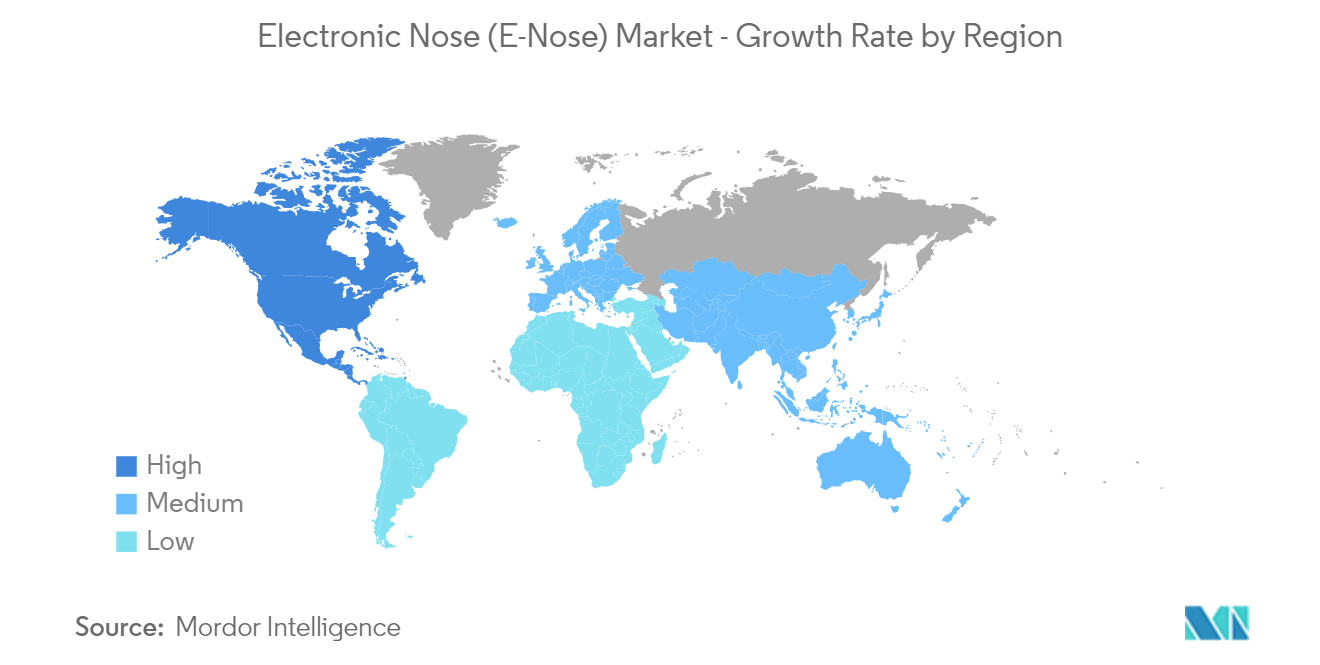Market Trends of Electronic Nose (E-Nose) Industry
Waste Management (Environmental Monitoring) to be the Largest End-user Vertical
- Methane gas and other odors produced at landfills not only contribute to global warming but also create an odor nuisance, which is considered one of the largest sources of nuisance in various regions. As a result, waste management or environmental impact monitoring applications provide significant scope for electronic nose technology.
- The opportunities for e-nose for odor exposure assessment purposes are critical, especially in cases where dispersion modeling is not applicable. For instance, in landfills, where a detailed characterization and quantification of odor emissions for every hour of the simulation time domain is difficult due to the nature of the source, among other reasons, e-nose technology that uses receptors can be of strong potential. As governments across regions are considering a circular economy (reuse by recycling) to manage their landfills better, the need for such technology that enables real-time monitoring is increasing.
- Odor annoyance due to industrial gas emissions from wastewater treatment plants (WWTPs) is a recurring problem that is difficult to manage properly, partly due to the lack of appropriate instrumentation to accurately quantify odor concentrations in situ and in real-time. Such measurements are key to regularly verifying the efficiency of odor abatement systems, identifying the main odor sources within the plant, and predicting off-site impacts based on atmospheric dispersion models.
- When odors are exclusively measured by olfactometry (human panels), the high cost and discontinuous nature of this technique inevitably lead to an insufficient number of measurements to provide a representative characterization of the odor emissions. Electronic noses are currently considered one of the most promising tools for environmental odor monitoring.
- Waste generation rates are rising around the world. As per the World Bank, in 2020, the world generated 2.24 billion tons of solid waste, which amounted to a footprint of 0.79 kg per person per day. With rapid population growth along with urbanization, annual waste generation is estimated to increase by 73% from 2020 levels to reach 3.88 billion tons in 2050. With the growing amount of waste, the investment and adoption of new technologies in managing waste are expected to positively boost and influence e-nose's adoption during the forecast period.

North America to Dominate the E-Nose Market
- North America holds a significant share of the market studied due to factors such as developed infrastructure and the availability of resources, which have enabled the adoption of e-nose technology in sectors such as defense, healthcare, and food and beverages, among others.
- The region is also home to a major food and beverage industry, which is highly regulated. This is where e-nose technology finds a prime opportunity for growth. For instance, according to the US Census Bureau, in December 2022, the monthly retail sales of food and beverage stores in the United States were USD 88.43 billion, compared to USD 82.14 billion in November 2022.
- According to StatCan, retail sales of food and beverage stores in Canada amounted to CAD 12.06 billion (USD 8.91 billion) in June 2022, compared to CAD 11.81 billion (USD 8.73 billion) in June 2021. Such an increase in food and beverage sales may facilitate the demand for electronic nose devices during the forecast period.
- The demand for e-nose technology is high in the food and beverage industry, as it can detect the freshness of food items, such as meat and poultry products, more effectively than a human nose. This helps in accurately determining the longevity of food items and reducing the amount of food waste.
- Similarly, healthcare agencies in the United States are trying to diagnose asthma in children using e-nose technology. In the United States alone, about 6.2 million children are diagnosed with asthma, comprising 8.4% of the population younger than 18 years. According to the report published by Pediatric Pulmonology, the country achieved an 80-100% success rate in asthma diagnosis using the e-nose technology. The study stated that this technology has fewer drawbacks, which are expected to be combated in the coming years, paving the way for the widespread adoption of this technology.
- Also, cities and states in the region regulate citizens and enterprises for odor pollution, which allows e-nose solutions to grow. For example, Buda, Texas, is fining residents for offensive odors. This includes an ordinance declaring offensive odors, including smoke, chemicals, and dead animals. Similar ongoing innovations and research across various end-user industries are expected to act as a catalyst for the market's growth in the region.

